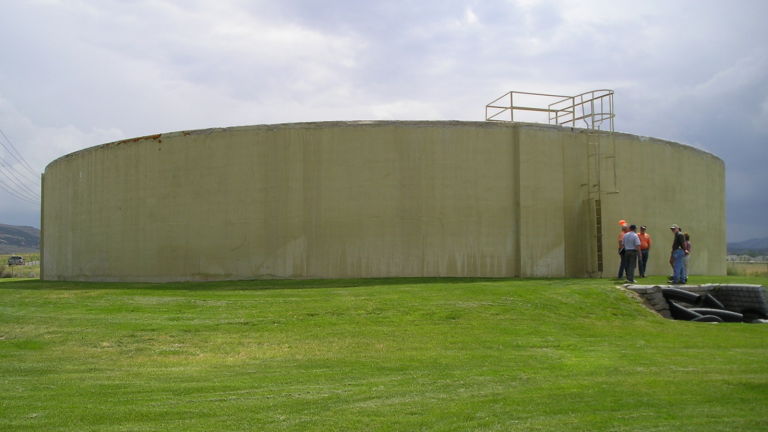A sanitary survey is on-site review of a public water system’s water source, facilities, equipment, operation, and maintenance. The purpose of a sanitary survey is to evaluate and document the capabilities of a water system’s sources, treatment, storage, distribution system, operation and maintenance, and overall management and financial capacity to continually provide safe drinking water and to identify any deficiencies that might adversely impact a public water system’s ability to provide a safe, reliable water supply. The survey also seeks to identify systems that need technical or capacity development.
The survey evaluates the following areas:
- Source
- Treatment
- Finished water storage
- Distribution system
- Pumps/pump facility and controls
- Monitoring, reporting, and data verification
- Water system management and operations
- System compliance
- Security
- Financial

DEQ and Idaho’s public health districts conduct sanitary surveys of all public water systems. DEQ conducts surveys of large public water systems and contracts with the health districts to survey the smaller systems.
The Idaho Rules for Public Drinking Water Systems require sanitary surveys of water systems to be taken every 3 to 5 years, depending on the type of system.
- Community Water Systems: Every 3 years (every 5 years if outstanding performance)
- Nontransient, Noncommunity Water Systems: Every 5 years
- Transient, Noncommunity Water Systems: Every 5 years
This accordion will not appear on the screen
Systems are notified when a sanitary survey is required. The surveyor contacts the system to make arrangements for conducting the survey. Unannounced or limited notice inspections may be conducted. A survey can take several hours to days to complete, depending on the complexity of the water system.
Discussion and Review of Records – When the surveyor arrives to conduct the routine sanitary survey, the first step is to go over the water system records. This includes discussion and review of the following:
- Water facilities inventory and records
- Distribution system plans and maps
- Routine operation and maintenance records
- Monitoring history and future monitoring schedule
- Source and finished water quality monitoring plan, history, and waiver status
- Operator certification credentials
- Additional components
Field Inspection of Water System – After the water system records have been discussed and reviewed, the surveyor will then take a tour of the water system. The tour will include an inspection of the following:
- Drinking water source
- Treatment equipment
- Pumps, pumping facilities, and controls
- Finished water storage
- Distribution system
Completion of the Sanitary Survey Form and Follow-up – Upon concluding the sanitary survey, the inspector completes a preliminary inspection findings form (PIFF) that identifies deficiencies and or potential violations that are pending further review. The PIFF does not constitute a final determination of compliance. A final report will be completed by the inspector and a copy will be provided to the owner/operator within 30 days after DEQ identifies the significant deficiency. Systems are then required to take corrective action within the agreed upon correction time frame.
Anything that can be done to help streamline the process will make the inspection more efficient. Review the previous sanitary survey report to help prepare for the next inspection. Review past deficiencies and ensure they have been properly addressed. If you are interested, download the current inspection form so that you know all the areas that will be reviewed. The complete inspection form that the inspectors use can be accessed through the Sanitary Survey Form.
Other steps to prepare for a sanitary survey inspection include the following:
- Have all records ready, such as monthly operational reports, equipment calibration dates, laboratory test dates, daily logs, system drawings, flushing and valve exercises, and backflow prevention measures.
- Have operator certification credentials readily available or displayed.
- Ensure access is readily available to all areas, including sources, storage facilities, pump stations, and treatment plants.
- Have an emergency response plan readily available.
Drinking water operators of public water systems classified as Very Small Water Systems (VSWS) or Distribution 1 (DST1) are now eligible for continuing education units (CEUs) for completion of limited homework activities, active participation in an enhanced sanitary survey, and follow-up corrective action planning associated with an enhanced sanitary survey. Details are in the Sanitary Survey CEUs for Drinking Water Operators form.

